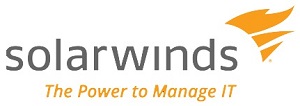
By Leon Adato, Head Geek, SolarWinds
 Another year is drawing to a close. We often hear the phrase, “Where does the time go?” when we look back on the year that’s gone. And why wouldn’t we? The rapid changes across the technology industry certainly makes us feel that time is going faster as every year passes, and 2016 was no different. Major security breaches, the growing need for STEM skills, the continuing dominance of hybrid IT, and the increasing automation of systems made 2016 a challenging year for IT specialists and end-users alike. Taking all this on board, IT managers will now be finalising their strategy for the year ahead and looking to the future. Every year is becoming harder to predict what is going to happen, so managers are looking to take calculated gambles. We have come up with our top five predictions in 2017 to make sure the dice you roll will help you hit the IT jackpot.
Another year is drawing to a close. We often hear the phrase, “Where does the time go?” when we look back on the year that’s gone. And why wouldn’t we? The rapid changes across the technology industry certainly makes us feel that time is going faster as every year passes, and 2016 was no different. Major security breaches, the growing need for STEM skills, the continuing dominance of hybrid IT, and the increasing automation of systems made 2016 a challenging year for IT specialists and end-users alike. Taking all this on board, IT managers will now be finalising their strategy for the year ahead and looking to the future. Every year is becoming harder to predict what is going to happen, so managers are looking to take calculated gambles. We have come up with our top five predictions in 2017 to make sure the dice you roll will help you hit the IT jackpot.
1. Move over SaaS: FaaS Gains Speed
2017 will see a new development in cloud computing: Functions as a Service (FaaS). This new cloud computing category allows customers to develop, run, and manage application functionalities without the headache of architecting and overseeing the backend infrastructure.
It will allow IT professionals to develop programs to perform specific tasks without the barriers that are currently in place. The rise of a new chapter in cloud computing signals the continuing maturity of the cloud market from its roots as infrastructure as a service, to PaaS, SaaS, FaaS, and beyond.
We predict that in 2017, more specialised services, such as FaaS, will continue to proliferate, given the targeted efficiency that leads to both a better experience and an improved pricing structure. The ability to run nearly any type of application or function, with zero infrastructure administration on the IT professional’s behalf, is tremendously appealing, and new services will likely focus on these benefits.
2. To Blockchain or Not to Blockchain
Blockchain technologies, peer-to-peer ledger technologies that began with bitcoin, have been on the minds of financial institutions for a number of years, but in 2016, the technology expanded beyond the bounds of the financial industry. At a time when companies are finding it difficult to deal with data management and security, blockchain provides a seemingly perfect solution. Supply chain use cases, for example, are now being tested and implemented to ensure the safety, security, and integrity of the information associated with these processes.
In 2016, a multitude of companies – banks in particular – began to test blockchain in lab environments, yet few are using it in practice. One of the roadblocks is agreeing on a common protocol, which has yet to take place. The other roadblock, of course, stems from a lack of proven security practices, especially for financial organisations.
We predict that in 2017, blockchain will gain steam as a buzzword and much more research will go into the technology and its functionality, although it’s unlikely there will be any effective new capabilities able to be readily implemented. However, 2018 will prove to be much more action-packed in terms of companies figuring out how to take advantage of data ledger technology to solve their data management issues.
3. Be Aware of the “New” Security Experts
Data breaches are not a new phenomenon, and the topic will again be top of mind in 2017. Over the last year we have seen many stories of data breaches. In fact, just this past month, it was announced that in 2014, Yahoo! fell victim to the biggest data breach in history, losing nearly 500 million accounts’ worth of personal user data to attackers. This trend shows no sign of slowing down.
We predict that in 2017, there will be exponential increases in both the volume and visibility of data breaches, particularly for large corporations.
Simultaneously, this increase in data breaches will force organisations to weigh the implications of potential data loss against the expense of hiring security experts. In many cases, businesses in 2017 will choose to take a calculated risk about what they can “afford to lose” rather than what it costs to prevent data loss entirely. This response will be especially true in the case of ransomware attacks, when it is nearly impossible to guarantee that hackers will not leak or reveal stolen data, even after receiving the “ransom” payment.
Finally, corporations and IT professionals must become hyperaware of attackers’ increased ability to take advantage of automation. The speed and ease with which an automated network breach can take place is new, and will ultimately aid in making corporate data breaches even more commonplace in 2017.
4. Shifting IT Roles
As traditional, siloed IT roles—network administrators, storage administrators, systems administrators, database administrators, and more—continue to take on new responsibilities, such as working with cloud service providers in hybrid environments, implementing new technologies, like containers and microservices, and acting as an IT liaison to business leaders, 2017 signals the return of the age of education and certification.
The ability to quickly learn new IT concepts and skills will be more important than being an expert in any one technology. While siloed experts who managed disparate parts of the infrastructure and application stack played a fundamental role in the traditional IT department, the modern data center is more interconnected than ever. As a result, IT generalists – who know a little bit about everything, have a holistic understanding of the application stack, and can make quick, informed decisions about new technology – will be particularly successful in 2017 and beyond.
5. Hybrid IT: Not Just a Concept, but a Reality
There’s no doubt that hybrid IT is the reality for the majority of organisations today and in the foreseeable future. And not only that, the center of technology itself is becoming increasingly hybrid. IT professionals must start thinking about management in a hybrid context. But what does it actually look like in practice?
In 2017, IT and business leaders will decide on specific solutions as they implement hybrid IT. For example, they may choose to use Office 365 and Skype for Business while hosting the identity management solution, Active Directory Federated Services, on-premises. Alternatively, the cloud has proven to be the best platform for virtual desktop infrastructure (VDI), delivering organisations the required flexibility and elasticity to provision and de-provision virtual desktops in bulk. By migrating this workload to the cloud, an organisation is able to relieve its IT professionals of the need to manage that infrastructure directly and refocus efforts on other on-premises projects.
Over the next several years, IT departments must exercise their growing responsibility to act as a technology liaison for business management by staying informed and making smart decisions when it comes to cloud, even if the decision is to do nothing in the near future because there is no immediate need for change. The key is to build a hybrid IT roadmap that integrates cloud adoption based on a per-workload and per-application basis to achieve a more agile, available, scalable, and efficient data center.




